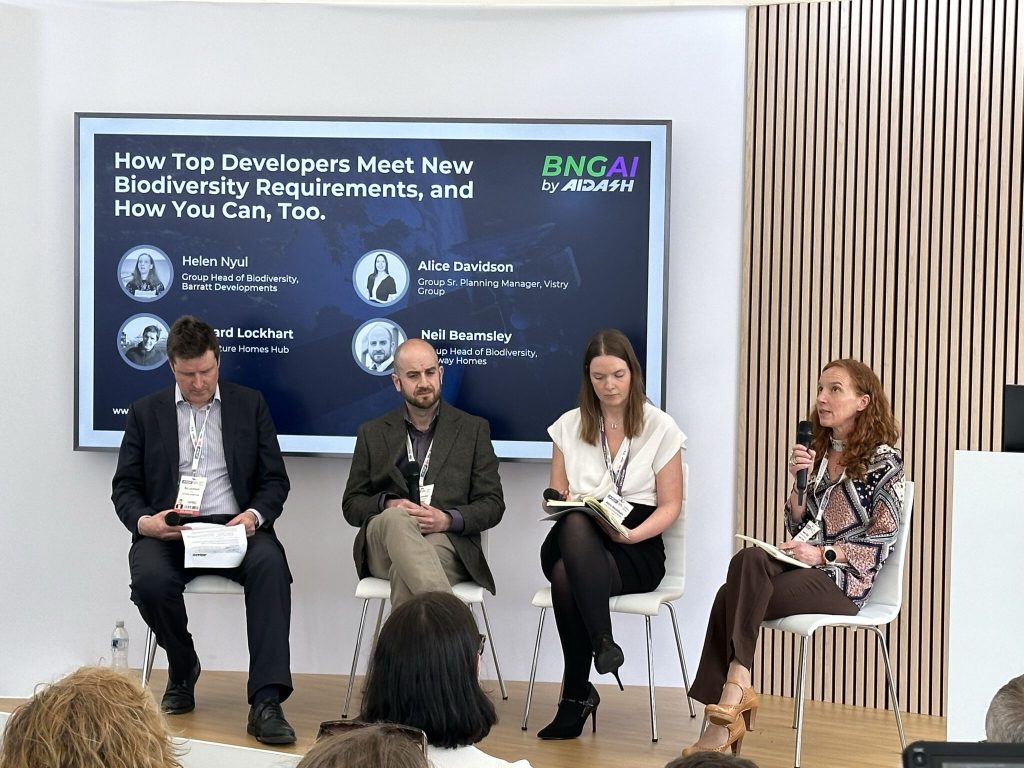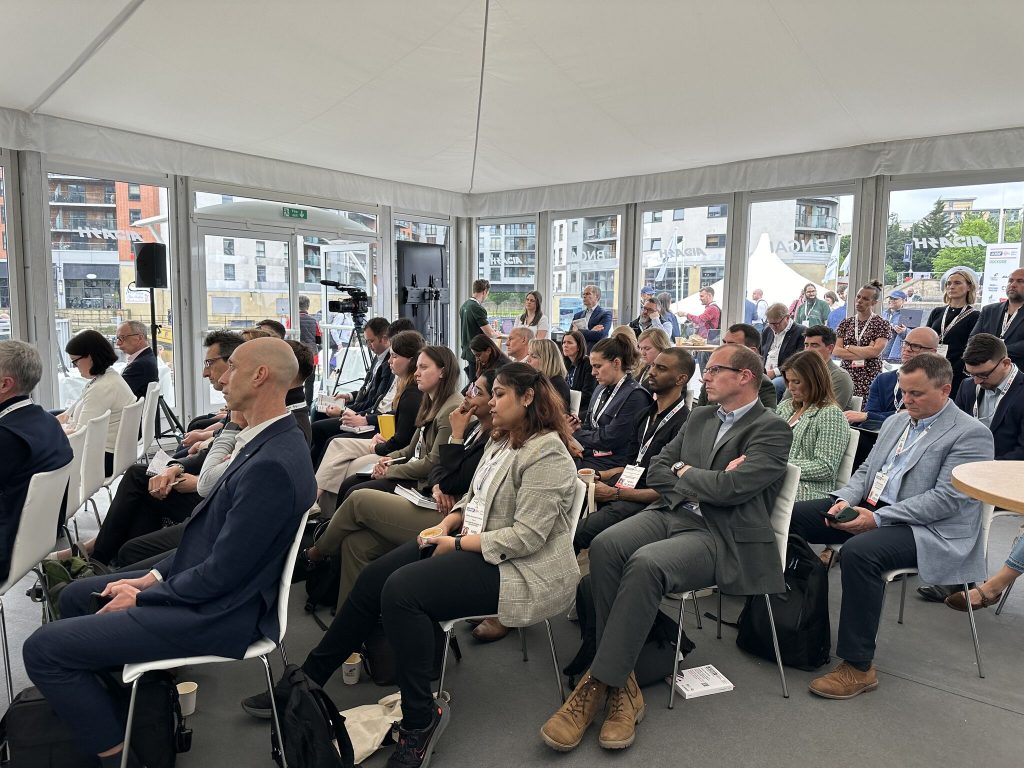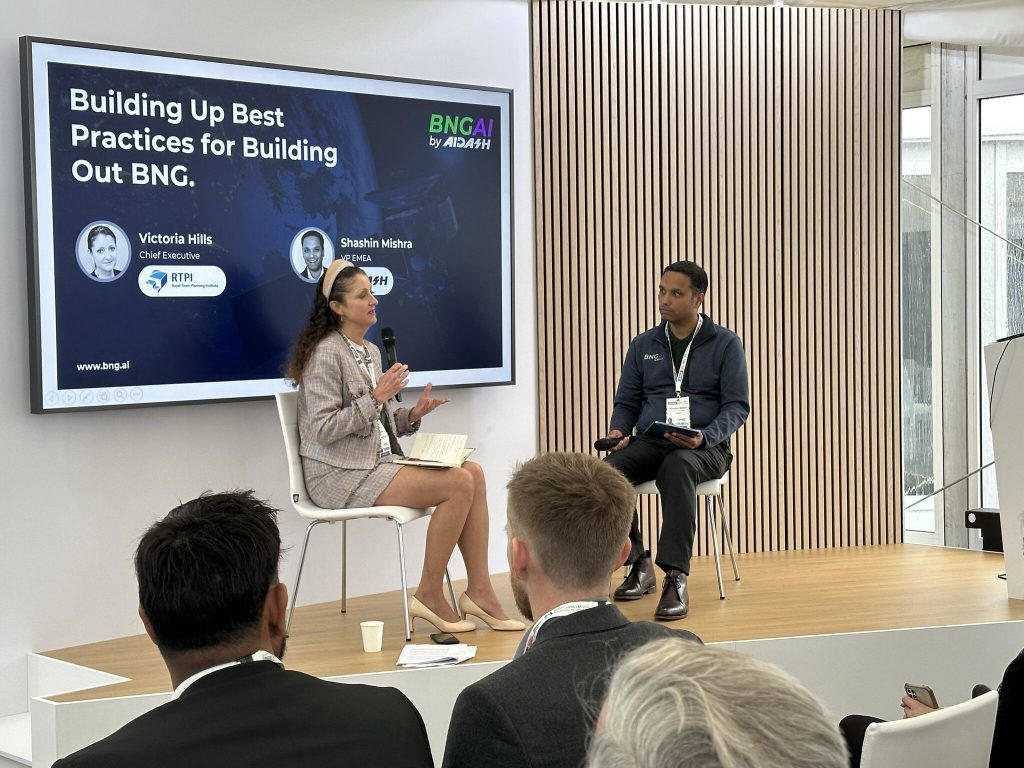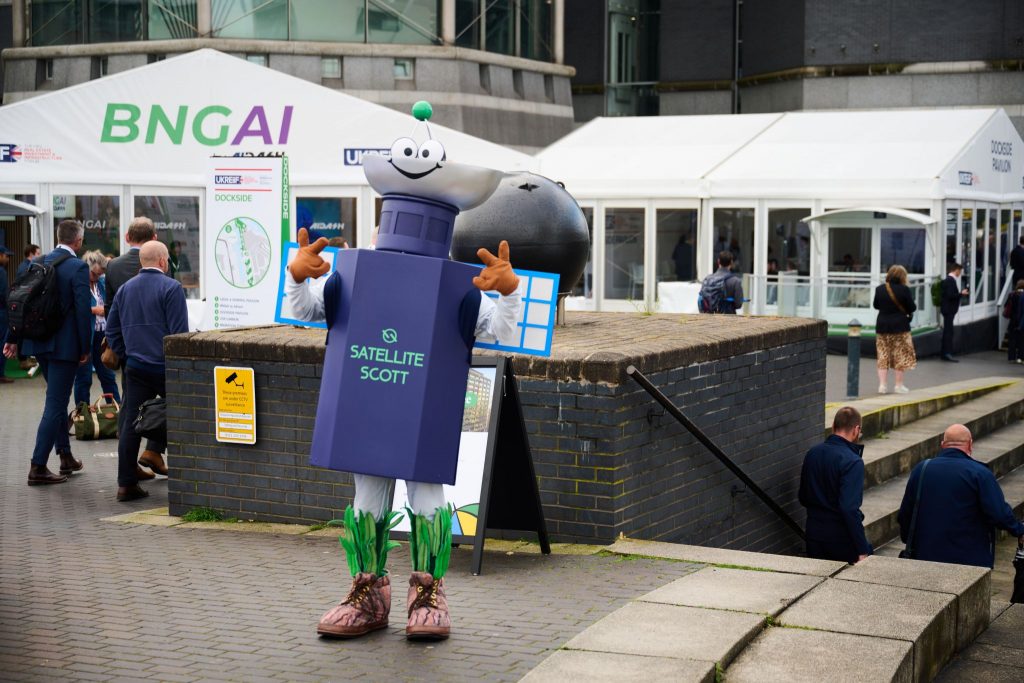In Leeds, UK, AiDASH had a strong presence among the 150 exhibitors and 12,000 attendees who turned up for UKREiiF, the 3-day conference for real estate developers, investors, government officials, and end users. According to the event site, every core UK city and region was involved.
Amid the talk of politics, large-scale development projects, and rising housing costs, there was much conversation on the topic of biodiversity net gain (BNG). The new BNG regulations are aimed at reversing the trend of biodiversity loss in the UK. It’s urgent; according to a recent National Audit Office (NAO) report, the UK has lost the greatest proportion of its biodiversity of any G7 nation.
The new regulations went into effect in February 2024 (with more landing April 2024 and November 2025), and the whole industry is working towards understanding the details of BNG and how to meet the requirements.
That’s primarily what AiDASH did at UKREiiF — giving practical advice in great detail, across 3 days of speakers, sessions, and panels, from a massive booth on the Dockside Pavilion.

In AiDASH’s conversations with people throughout the event, a few key themes emerged.
Huge demand for education on BNG
At this point, no one is confused about the broad strokes of BNG. Besides that, what’s done is done, and it’s the law of the land. Now the task before each stakeholder in the industry is understanding BNG better, and how it affects the minutiae of their own day-to-day work and longitudinal planning, alike.
They need education. Many of their questions are essentially about legal considerations, both what their obligations are and what they must avoid doing.

How do biodiversity credits work? Who is in charge of actually tracking and enforcing BNG rules? Can local planning authorities (LPAs) require greater than 10% BNG? How is the Small Site Metric different from Defra’s Statutory Biodiversity Metric? And so on.
Fortunately, most of those questions already have answers. (Check out this deep dive legal FAQ for answers to many of the common, and not-so-common, BNG questions.)
Industry appetite for finding efficient and ironclad ways to gain BNG approval
New regulations beget new ways of doing work. It’s clear that there’s an appetite in the industry for figuring out those new ways, especially when it comes to finding the least resistance to project approval.
People want to meet BNG requirements, and although they don’t want to cut corners, they do want to be maximally efficient. Nobody wants to get fined or see their projects fail because they botched their BNG application and planning. They also want to know the best ways to do it, like limiting the time and costs involved with getting their projects approved.
Meanwhile, the LPAs who approve or reject applications want to be sure they know what’s acceptable and sustainable, and what isn’t. That’s because, in the long term, they’ll have to enforce BNG commitments that they approve.
Asset managers and investors are trying to figure out the new regime, too. The new BNG rules have changed the landscape of ESG (Environmental, Social and Governance) investing. When they’re planning large projects or creating new funds, investors have to figure out the biodiversity credits scheme. For example, they may decide to buy up land, where they can score biodiversity credits to balance other projects.
Clear acknowledgment that technological solutions are needed
The industry is at a pinch point. Just as BNG requirements are landing, necessitating more effort from everyone in the ecosystem, there’s a skills shortage among construction workers, ecologists, and local planners. Because skills shortages tend to be pipeline problems, they generally can’t be solved quickly. It takes years of recruitment, schooling, and training to get more skilled workers into any industry.
Take the case of LPAs. They’re responsible for processing and approving BNG applications from developers and enforcing the regulations. According to the NAO report, although the government sent some funding to support local authorities, many remain under-sourced. For example, the report notes that there’s no additional money for ecologists who are tasked with mapping and then monitoring sites for BNG progress.

BNG mandates mean more work all around, and there isn’t enough money or human resources to keep pace. That’s where the industry is looking towards technology.
Traditional manual processes for mapping and evaluating land for development (and then preparing ironclad BNG applications) are time-consuming and expensive, and sometimes not sufficiently accurate. UK developers are losing £300,000 every day by relying on older methods of assessing developments, consolidating results, and creating BNG plans.
The industry needs technological solutions like satellite imagery and AI.
That’s why AiDASH created BNGAI™. BNGAI™ is a comprehensive end-to-end BNG management platform that uses satellites and AI to deliver accurate results, from baseline measurements to generating reports, all the way through to creating a BNG action plan and taking post-development scenarios into account.
BNGAI™ works for projects of any size. The platform includes a unified portal, a desktop application and mobile application, GPS integration to record BNG coordinates, the ability to generate transects and sample points within the survey area, and more.
BNGAI™ offers greater accuracy (especially in inaccessible habitats) and can reduce planning time involved from weeks to days.

At UKREiiF 2024, it became clear how important technology will be to meeting BNG requirements in its first year. It will be fascinating to see how the industry is using technology when UKREiiF 2025 rolls around.
Start your first BNG project now!
The best collection of tools, tips, guides, and industry stories – straight to your inbox.
Subscribe to our newsletter
